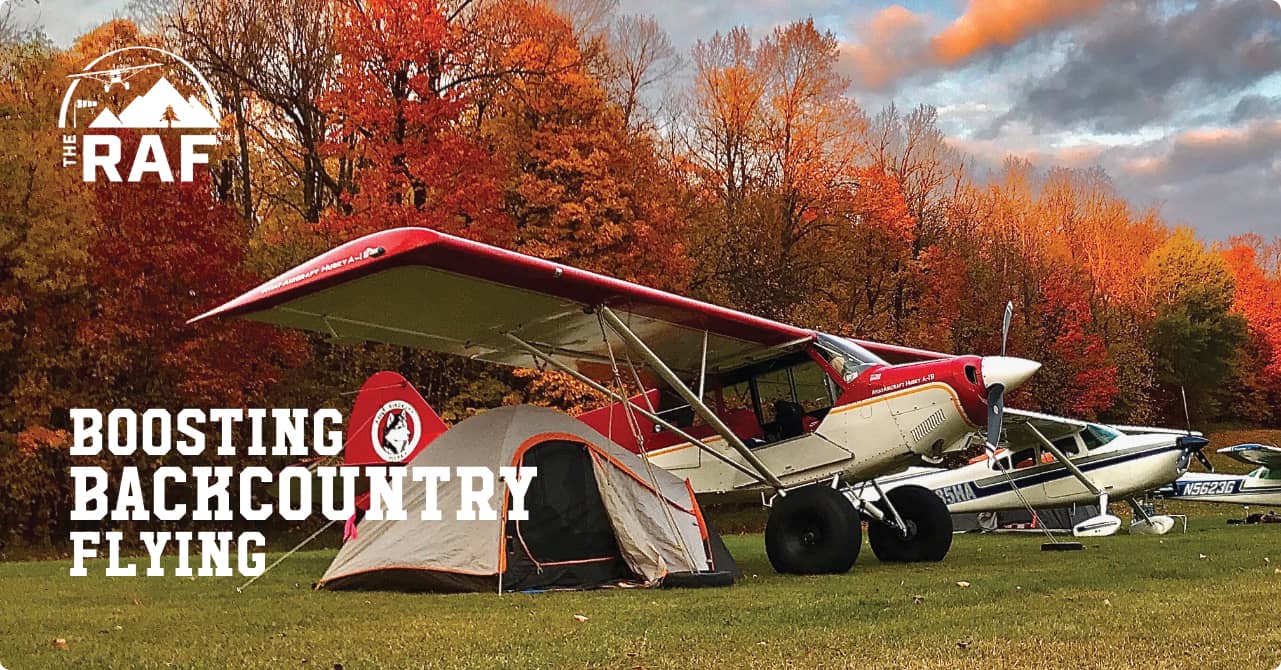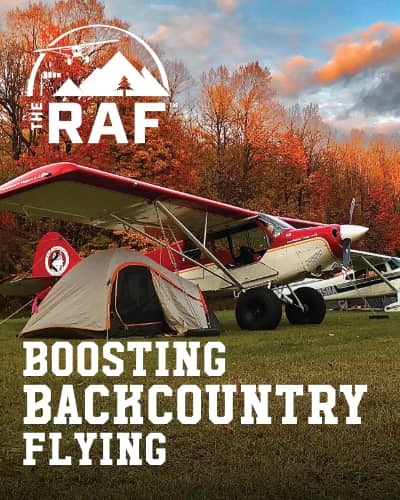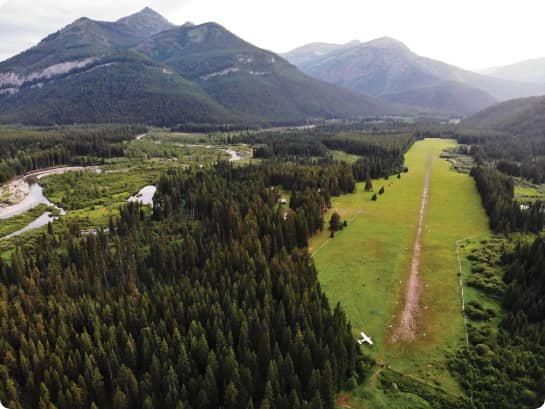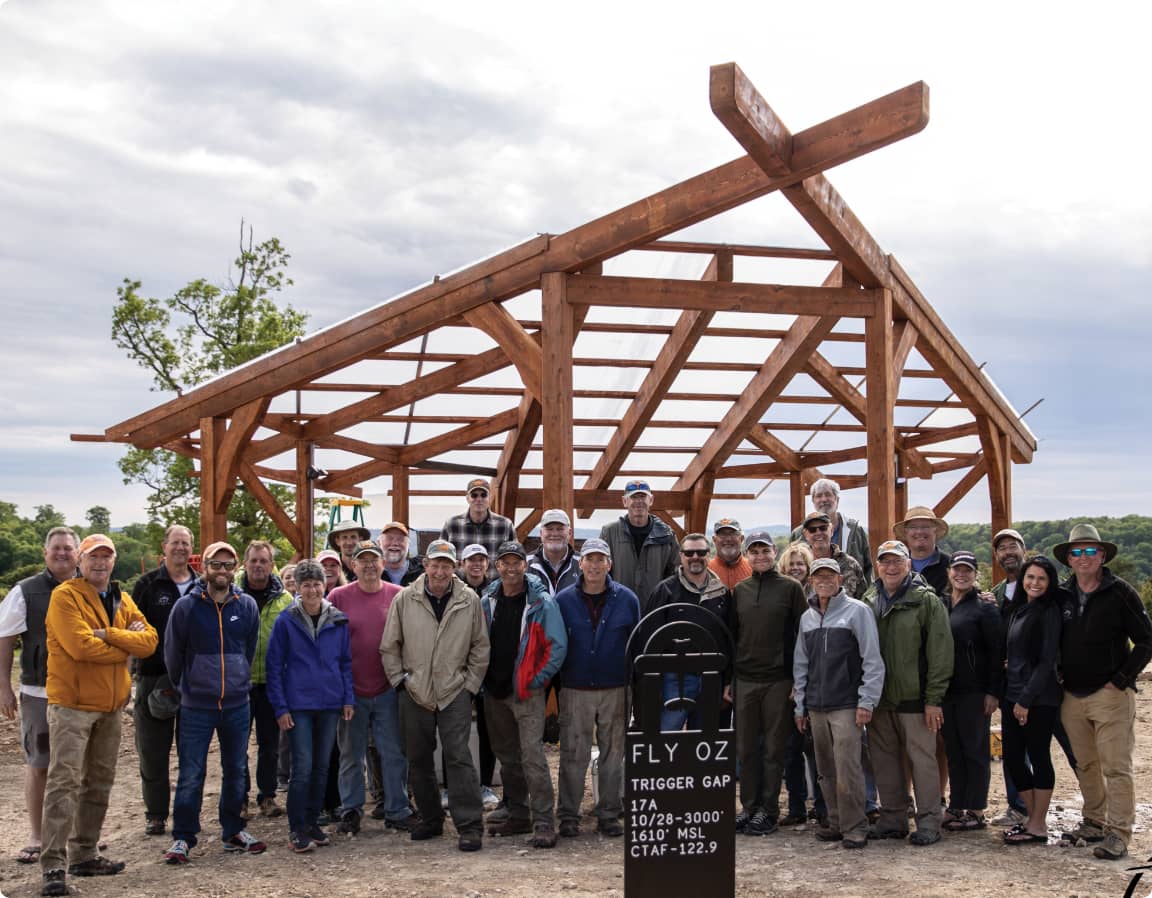

by Carmine Mowbray, RAF Publicity Liaison
The Recreational Aviation Foundation (RAF) is celebrating another year of collaborative successes. Improvements to backcountry airstrips have been completed from New England to New Mexico, including Michigan’s Upper Peninsula.
Since its founding as a 501(c)3 donor organization 18 years ago, the organization has supporters in all 50 states and some foreign countries, totaling nearly 10,000 followers. The mission is carried out from its Bozeman, Montana headquarters with one paid Volunteer Coordinator who oversees a cadre of volunteer state liaisons and dozens of RAF ambassadors who interface with pilot organizations, local EAA Chapters, state Aeronautics bureaus, and type-clubs in their respective states. RAF liaisons engage with these groups for best ways to enhance local recreational aviation opportunities and preserve access to them.
In response to growing project opportunities and online communication, a Director of Marketing was recently added after having served the RAF for a year as an intern.
The RAF cooperates with AOPA and local stakeholders to reverse threatened airfield closures, by pointing out the economic impact and benefits of recreational aviation. RAF volunteers assist in representation at land planning meetings, and commit to improvement and maintenance responsibilities. Recent examples are Isle Airport in Minnesota, and Goodspeed in Connecticut. Goodspeed airport has a 2,120-ft paved runway, a parallel turf runway, and is the only seaplane base in southern New England. When RAF Director Bill Brine learned the airport land was up for general sale, the RAF provided funds toward a down payment, leveraging a local aviation group into an outright purchase. “All the pieces are in place for success in preserving this airport for public use in perpetuity,” Brine says.


In addition to the cooperation the RAF seeks from state organizations, a large part of the RAF success story depends on its partnerships with commercial aviation goods and service providers like Hartzell, who right now is offering RAF members $1,000 savings on certain propellers through 2021. In addition to the benefit to the buyer, Hartzell has pledged $250 toward the RAF mission for each of these sales. (See page 6 for details.) “This demonstrates Hartzell’s dedication to backcountry aircraft safety, performance, and noise reduction – features RAF members really appreciate. We encourage you to get in on this offer. You’ll save yourself a thousand dollars, and boost the RAF mission, thanks to Hartzell’s generous pledge,” RAF Chairman John McKenna said.
Recreational airfields are located on both public and private lands. The RAF maintains close relationships with public lands managers, starting at the top level with the US Forest Service, Bureau of Land Management, and National Park Service. In January, RAF Chairman John McKenna and US Forest Service Recreational Director Michiko Martin remotely co-signed the five-year renewal of the Memorandum of Understanding between the USFS and the RAF. The federal budget now includes an annual allocation of $750,000 for the maintenance and preservation of backcountry airstrips on USFS lands. “Working together, we are tracking projects and access to eighty-seven airstrips in seven of the nine Forest Service regions across the country,” RAF Director Tim Riley said.
This MOU codifies volunteer participation on these public lands. “We spent time in Washington, D.C. building the relationships that led to these agreements,” McKenna said. “Then, we partner with state and local pilot associations, and flying clubs to help complete the ‘boots on the ground’ work” he added. “You’re just as likely to find one of our volunteers wearing a suit and tie in Washington, D.C. advocating to protect these airstrips, as you are to find them in their work clothes, digging a fence post hole, or clearing brush,” he pointed out.
On private lands, RAF state liaisons connect with owners of private airfields, and offer guidance on liability issues, FAA charting, improvements and work parties.
The RAF’s “signature” property is Ryan Airfield, above West Glacier in Montana. The land was donated to the RAF by Ben and Agnes “Butchie” Ryan, and RAF donors sent adequate funds to erect an Amish barn and two rustic cabins to augment the existing volunteer-built shelter and camping areas. “As stewards of this special place so close to Glacier National Park, we saw the chance to build not only a barn, but a great place for recreational aviation,” McKenna said. “Typical of RAF projects across the country, a dollar given multiplied because of the hundreds of hours of work by volunteers, some of whom traveled thousands of miles to help.”
The RAF is especially proud of its successful partnership with The Nature Conservancy. In Arkansas, the TNC approved and participated in the creation of Trigger Gap, a new turf airfield on TNC lands above the Kings River. Volunteers added camping amenities, and a recent fund drive raised enough donations to build an open-air timber and stone pavilion in keeping with TNC aesthetics. Designed by RAF Kentucky Liaison and architect Jeff Smith, the pavilion features solar lighting, a place to charge your electronics, and a fireplace.
The RAF has built up a grant fund for projects that fit the RAF mission. Since the RAF runs on volunteers, “we turn donations into deliverables,” Administrative Director Tricia McKenna says. Upgrades such as shower facilities, shelters, picnic pavilions, vault toilets, WiFi and weather stations have been installed; and grants go toward ongoing maintenance for airfield safety improvements like removal of encroaching brush and trees at Michigan’s North Fox Island, an airstrip that had been closed for decades. RAF Michigan Liaison Brad Frederick took the lead over several years to reopen it and organize volunteers to help maintain it. “It’s one thing to open up one of these airstrips. It’s the ongoing work that’s the major effort,” he said, adding, “Last year over 230 aircraft signed in on the island and they all enjoyed the work of our volunteers’ dedicated efforts.”
A popular project is the Airfield.Guide, created in response to requests for a comprehensive listing of recreational places to fly. It lists physical characteristics, safety briefings and amenities. Created in cooperation between the RAF and Tailwind Aviation Foundation, all of the work is provided by volunteers. RAF state liaisons send in appropriate airfields for consideration. Once the information is verified, the location is added. The site includes airfields in all 50 states, and more are being added all the time. See airfield.guide to register. Once you’ve created a user email, you receive updates of the new listings.
“We continue to seek new opportunities, and keep our backcountry voice heard nationwide,” McKenna said. “We are committed to keeping backcountry a thriving part of aviation.”